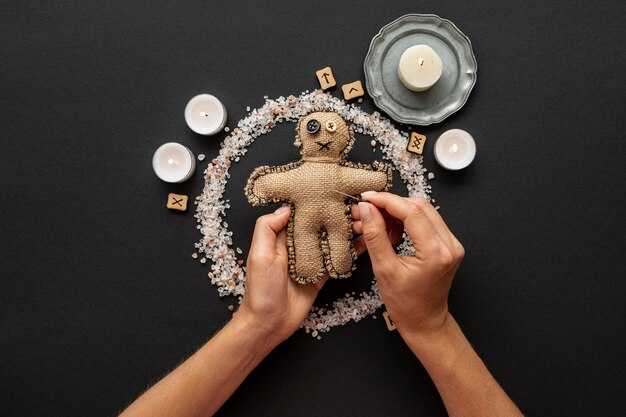A lot of people misunderstand avoidance: they assume pulling away is a sign of strength, that detachment equals confidence. In reality, avoidant withdrawal is not power — it’s fear. Two different fears, constantly tugging in opposite directions: terror of closeness and terror of being left. And when you finally stop pursuing someone and begin to move forward with your life, the alarm of abandonment often drowns out everything else. That’s when they suddenly reappear. But what really brings them back — love or panic? Let’s unpack the pattern that keeps trapping you. You’re not delusional, needy, or overreacting. If someone retreats the moment you grow closer and then chases you the instant you stop, you are witnessing an avoidant attachment cycle. Understanding it is the first step toward stopping the self-blame and seeing what’s actually happening. What follows is a clear breakdown: the central fear driving avoidant behavior — that inner conflict between craving closeness and being terrified of it; the famous sudden comeback and why it occurs when you begin to let go; the phenomenon of love-bombing and hollow assurances that feel powerful in the moment but rarely endure; the mixed signals and confusion that make you question yourself; the unspoken struggle at the core of this pattern — control versus connection; and finally, the mindset and practical tools required to hold steady in your own growth so the cycle no longer pulls you back. Practical, real-time decision filters and concrete examples will be provided, because this isn’t mere theory — it’s about your life, your heart, and your peace. The payoff: after engaging with this material, recognition of the avoidant pattern will be easier, the fog of mixed messages will clear, and mistaking fear for love will become less likely. More importantly, there will be a clear path out of the chaos toward the kind of relationship you actually deserve. If something resonates, type the word love or fear in the comments and start naming the pattern for what it is. At the core of everything are not one but two fears locked in a tug-of-war that explains the whole repetitive cycle. The first is fear of intimacy — often a lesson learned long ago that closeness equals risk. Maybe love was unpredictable in childhood, vulnerability was punished, or sharing feelings led to criticism, rejection, or abandonment. Over time an avoidant nervous system adopts a survival rule: don’t get too close. Detachment becomes protective armor rather than evidence of true independence. The wall isn’t proof they don’t want love; it’s a barrier against the pain they expect from it. In their internal logic, intimacy is hazardous, so attempts to move closer trigger escape behaviors — stepping back, dodging, withdrawing. Yet a paradox remains: beneath the armor sits a human need for connection, a fear of being left behind. No matter how much distance they create, the wiring for belonging persists, and that produces the second fear — abandonment. When these two anxieties collide, the classic push–pull emerges: you reach in, they recoil; you invest more, they resist more. Then something shifts when you finally stop giving chase. Picture a child who pushes a parent away to avoid scolding, but then sprints after the parent and cries when the parent actually leaves the room. That same dynamic repeats in adult relationships. Or imagine a rubber band between you: you move closer and it stretches as they pull back; when you release, it snaps back toward you. That snap can feel like intimacy, yet it’s simply a reflex — a nervous system recalibrating — not mutual closeness. The crucial point: their distance is fear, not strength; their sudden return is survival, not necessarily love. Without recognizing this, it’s easy to get drawn into the illusion again. Notice how an avoidant partner often seems composed and disengaged while you’re pursuing them, only to call, text, or show up once you stop reaching out? That shift isn’t random; it marks the moment the fear of abandonment grows louder than the fear of intimacy. The trap is believing the comeback signals change. Often it doesn’t. The return is usually a reaction, not a transformation. So ask: are they coming back because they’ve chosen vulnerability, or because panic at loss has kicked in? Real intimacy is consistency through discomfort; survival reactions are desperate attempts to avoid loss without learning how to be close. Long exposure to this chaos can lead you to internalize blame, thinking you must be more patient, more lovable, or more perfect. Their pattern is not a reflection of your worth but of their wiring. Keep this take-away front and center: avoidant attachment is armor, not independence; reappearing out of panic is reflex, not proof of love. Fear can propel someone to reach — but fear alone rarely produces sustained presence. Once the paradox of fear of intimacy versus fear of abandonment is understood, personalizing their behavior becomes unnecessary. Their withdrawal isn’t always rejection, and their return isn’t always a breakthrough — it’s a nervous system battling itself, and that awareness is the first step toward freedom. Next, consider the precise trigger that flips the balance: the sudden reappearance. Many people know this pattern from months or weeks of experience. You’re the consistent initiator, trying to bridge the gap while they act indifferent, as if your comings and goings hardly matter. Then you stop: you cease the texts, the calls, the explanations, you begin to move on. Out of nowhere they surface — a late-night “I miss you,” an unexpected phone call, a dramatic public gesture. It feels miraculous; finally they seem present. Yet what often pulls them back is not love but survival instinct. As long as you persistently pursue, their fear of intimacy typically dominates; your presence functions as a safety net, allowing distance without perceived risk. Once pursuit ends, the absence registers as danger and the fear of abandonment triggers a frantic response. That panic can produce intense moments of vulnerability — sudden confessions, vows, or emotional displays — and it can feel wholly genuine because in that instant it is genuine: their nervous system is genuinely alarmed. But frantic clinging isn’t learning a new way to relate; it’s treading water. When the crisis subsides, the old pattern usually reasserts itself. The heartbreak is that those urgent returns often masquerade as change. To judge whether the comeback reflects real growth or merely reflexive fear, ask two questions: is their return characterized by temporary intensity or by steady consistency? Intensity is loud and dramatic; consistency is quiet, reliable, and demonstrated over time through repeated willingness to engage in hard conversations and follow through on commitments. And second: are they returning from a place of love — choosing to stay even when it’s uncomfortable — or from fear — unable to tolerate the thought of losing you but still unable to allow you in? One lasting image: the rubber band between you and an avoidant partner. Stretching toward them creates tension; letting go causes a snap that feels like closeness but isn’t mutual movement, only a release of pressure that can reverse again. The sudden reappearance proves the cycle’s existence, not its end. Mistaking it for transformation only risks being pulled back into the confusion you tried to escape. So the next time your avoidant reappears,
Take a moment and breathe. Ask yourself: is this genuine love, or is it fear masquerading as love? If it’s fear, it won’t endure. Fear subsides once the perceived threat is gone; love is what remains after the anxiety has passed. Don’t let an automatic reaction convince you that everything has been resolved. Intimacy born from panic can feel electrifying, but it rarely holds up over time. Recognizing that difference is the first step out of the loop instead of getting swept around in it again. Now let’s examine what often follows a sudden return: the flood of affection, the love-bombing, the emotional displays that sweep you off your feet and finally seem to deliver the love you’ve been craving. When you’ve been starving for connection, that surge can be intoxicating. One day they couldn’t even answer a message, and the next they’re smothering you with attention—late-night calls, declarations about how important you are, claims they can’t picture life without you. It feels like a complete reversal. That’s precisely why it works. Be clear: love-bombing is not love. It’s fear in disguise. Consider someone who has kept you at arm’s length for months—avoiding closeness, dodging emotional talks, resisting commitment—and then suddenly floods you with the words and gestures you longed for. That’s not a real transformation; it’s an attempt to regulate panic. They’re trying to soothe their fear of losing you by overwhelming you with what they hope will draw you back. Your body and brain can’t reliably tell the difference. If you’ve been living with emotional scarcity—deprived of affection, attention, and dependability—then an abrupt outpouring triggers your nervous system like hitting the jackpot. The intensity gets mistaken for proof: proof of love, proof of change, proof that they finally woke up. But intensity is not intimacy. Picture it this way: love-bombing is like fireworks—brilliant, attention-grabbing, impossible to ignore, yet fleeting. Real intimacy is a steady flame: low-key, reliable, and persistent even when no one is watching. This isn’t to say an avoidant partner is always intentionally manipulating; often they aren’t aware of what they’re doing. From their perspective, panic over losing you compels them to act, and this is the only way they know how to try to bring you back. Intentional or not, the result for you is the same—you’re swept up in an illusion. So how can you distinguish love-bombing from authentic change? Use a simple test: can they sustain it? Anyone can spout the right words when terrified. Anyone can show up big in crisis. The real question is whether they keep showing up once the fear ebbs. Can they follow through, not only with grand gestures but with the small, ordinary acts of consistency that true intimacy requires? For example: love-bombing looks like a flurry of midnight texts pleading, “I can’t lose you.” Real change looks like making—and actually attending—couples therapy appointments regularly. Love-bombing is sending flowers after a fight; real change is learning to have difficult conversations without shutting down. Love-bombing comes with promises: “It’ll be different this time.” Real change proves itself through weeks and months of steady, dependable behavior. Ask whether their commitments are written in fireworks or on a calendar. Bottom line: if someone shows affection only when they’re afraid of losing you, that’s survival behavior, not love. Confusing survival tactics with genuine transformation will trap you back in the same cycle, mistaking intensity for intimacy again and again. Love-bombing feels good because it temporarily scratches that deep itch, but it’s a mirage. The underlying emptiness hasn’t vanished—you’re just distracted by a shimmer on the horizon. Falling for that illusion carries a cost: it erases hard-won progress, saps the strength you’ve been building, and blurs the clarity you began to taste. So the next time they return with extravagant gestures, dramatic declarations, or promises that sound too perfect, pause. Don’t be carried away by the rush. Ask whether this is true intimacy, because the reality is that genuine love doesn’t need to shout to be noticed. It doesn’t require fireworks. Real love is quiet, steady, and present even when fear isn’t in the room. Charm can lure you for a moment; consistency is what keeps you safe over a lifetime. Now consider what happens after the fireworks die down. If love-bombing drew you back, confusion is what maintains the trap. Here’s the pattern: for a while they text constantly, profess how much you matter, maybe make future plans; you relax and think, “Finally, progress.” Then almost suddenly the warmth cools. They stop messaging as much, seem distracted or distant, and you’re left reeling—wondering what changed, replaying conversations, questioning if you imagined the whole thing. That push-and-pull isn’t random; it’s the avoidant pattern at work. If they were always warm, they’d feel suffocated; if always cold, you might leave. Alternating between closeness and withdrawal keeps you attached because you keep chasing clarity. Psychologists call this intermittent reinforcement, one of the most potent hooks for human behavior—the same mechanism that keeps people pulling the lever on slot machines. Not knowing when the next reward will come keeps you engaged. That sudden affection followed by retreat is not only confusing; it’s addictive. When expectations are inconsistent, you work overtime to decode mixed signals: analyzing texts, searching for hidden meanings in silences. While acting as detective, one thing is certain—you’re not moving forward. You’re stuck in the fog. The painful truth is that many avoidants aren’t deliberately setting out to manipulate; for them, the pattern of pulling close then pulling away is a way to manage their own fear. Regardless of intent, the effect on you is the same: confusion, self-doubt, and emotional exhaustion. If you’ve been in this pattern, you may have told yourself, “If I’m more patient, they’ll stop pulling away. If I prove myself, they’ll stay. If I don’t mess up, we’ll return to the good times.” The reality is: you are not the cause and you’re not the cure. They pull back because of their wiring, not because of your value. Unless they actively work on that wiring—through therapy, self-reflection, or a genuine commitment—the cycle will repeat no matter how much you give. When you’re lost in mixed signals, ground yourself in clarity. Stop asking “What did I do wrong?” and start asking what is actually true. Use three questions that cut through the haze: Do their actions consistently match their words? Do promises lead to real follow-through or only to more promises? Do you feel safe and secure with them, or are you always bracing for the next shift? These questions bring you back to reality, pulling you off the emotional slot machine and into the realm of evidence. You do not owe anyone your confusion. You do not owe endless patience while losing yourself decoding another person’s behavior. Love should provide clarity, not chaos. True connection doesn’t make you question your worth or your place; it steadies and frees you, allowing you to live without constantly scanning for danger. So when you’re caught between warmth and withdrawal, remember: confusion is not connection. Doubt is not intimacy. Mixed signals are not love. If someone gains from keeping you uncertain—consciously or unconsciously—they are not worthy of the certainty of your devotion. Beneath this cycle lies a deeper struggle between control and connection. Here’s the paradox: everyone wants love and safety; avoidant people are no exception. They long to be seen and chosen, yet their wiring warns that closeness is dangerous. Their solution is distance: they raise shields and retreat. That distance has a cost, and they risk losing the relationship. When they sense this loss, fear of abandonment spikes and they scramble to bring you back—not primarily for connection, but to regain control. Control becomes a survival strategy: by dictating when the relationship opens and when it shuts, how much intimacy is allowed and when, they create a predictable rhythm that protects them from being overwhelmed. But that’s not safety—it’s control in the guise of love. Look at the cycle again: disappearance, reappearance, charm, withdrawal, confusion, then being reeled back in. Each turn of the wheel reinforces their control; they set the terms and you react. Over time, this dynamic erodes your sense of agency. You may think you’re fighting for connection, but the real struggle is for control. The more effort you put in to stabilize the ups and downs—proving your worth, fixing the roller coaster—the more you feed the system. It’s not weakness to be hooked; it’s the system doing its job. Imagine a battlefield: on one side stands the banner of connection—consistency, closeness, safety—and on the other the banner of control—distance, power, self-protection. The more you push for connection, the more they entrench in control. That war never resolves because love and control cannot coexist. The essential truth: love embodies freedom; control stems from fear. When fear is in charge, love is sidelined. How to escape? Stepping out of the battlefield entirely. The cycle functions only because you play a role: chasing, over-explaining, decoding mixed signals. The moment participation stops, the game collapses. This doesn’t mean slamming the door or turning bitter. It means refusing to negotiate your worth, declining to trade your peace for scraps of attention, and no longer confusing control with connection. If the price of being with someone is surrendering boundaries, needs, and clarity, that is captivity—not connection—and you deserve better. So ask yourself: is this love, or a power struggle in disguise? If an avoidant partner isn’t willing to confront their fears and lower their walls, the cycle won’t end. You can’t love someone out of their fear. You can’t out-give a wall they refuse to dismantle. But you can reclaim your power. Reclaiming power isn’t about becoming cold or uncaring; it’s about refusing to mistake control for closeness. Control might keep someone physically near, but only love keeps someone by choice. The real work of breaking free isn’t found in analyzing someone else; it’s found in standing firm in your own growth. At a certain point the question shifts: it’s no longer about their fears but about your strength. It’s not whether they will change; it’s whether you will hold the line on the progress you’ve already achieved. Growth means seeing the pattern for what it is. Growth means recognizing that clarity, consistency, and chaos-free connection are your right. Growth means no longer exchanging your peace for another ride on the roller coaster. Holding steady in your growth is choosing differently. Expect this: when peace is reclaimed and you begin to step away, avoidance tactics often intensify. As they sense you slipping, fear spikes and they may return with charm, promises, and confusion intended to destabilize. The temptation to believe can be strong—hope, longing, the pull to fall back in. Standing firm means pausing and saying, “The pattern is clear; I won’t step back into it.” Standing firm isn’t about punishing or slamming the door. It isn’t about hardening the heart. It’s choosing self-respect over self-sacrifice; loving oneself enough not to let fear decide one’s choices. The avoidant’s final desperate moves only work if misread—if panic is mistaken for passion, fear for love, control for commitment. Once the pattern is seen, the spell dissolves. Each time the pull is resisted, self-trust strengthens. Every boundary held proves the ability to protect peace. Each small forward step compounds into greater clarity. Over time, the cycle loses its appeal. One day the craving for what once trapped you simply vanishes. Intensity is no longer mistaken for intimacy. Inconsistency no longer passes as passion. You become someone different: someone who no longer tolerates crumbs but knows they deserve the whole meal. So reflect: are you ready to stop chasing and start choosing? Ready to stop settling for panic disguised as passion and instead stand firmly in your own development? Fear can make someone run after you, but only love can walk beside you. If what’s pulling them back is fear, it won’t last. If what anchors you is growth, that endures. Standing firm in growth is not a refusal of the other person; it’s an affirmation of yourself—yes to your peace, yes to your clarity, yes to a love that never forces you to question your worth but confirms it every day. The most powerful move in a relationship isn’t changing someone else; it’s refusing to abandon the growth you’ve fought for. The avoidant cycle—detachment, reappearance, love-bombing, mixed signals, control—has been exposed. The key takeaway: someone running after you doesn’t mean they’re ready to walk with you. Fear can chase; fear alone can’t sustain. You deserve a love that’s steady, safe, and reliably present—not one that shows up only when afraid of losing you. If this resonated, do two things: write “love” or “fear” in the comments to indicate which part of this cycle you’ve experienced, and share this video with someone who needs clarity. To go deeper, watch the linked video on setting boundaries that actually hold. Remember: clarity and connection—that is the love you deserve.



 The Final Desperate Move Avoidants Make When They See You Moving On">
The Final Desperate Move Avoidants Make When They See You Moving On">

 How to Stop Being Manipulated by a Narcissist">
How to Stop Being Manipulated by a Narcissist">
 How I SAVED my Broken Marriage">
How I SAVED my Broken Marriage">
 Do you feel STUCK in your Relationship?">
Do you feel STUCK in your Relationship?">
 Give Me 15 Minutes — You’re About to Get Your Life Together">
Give Me 15 Minutes — You’re About to Get Your Life Together">
 You Can’t Shake the Feeling That Everything is TEMPORARY">
You Can’t Shake the Feeling That Everything is TEMPORARY">
 Don’t Stonewall the Narcissist.">
Don’t Stonewall the Narcissist.">
 How Trauma Bonds Wreck Your Mental Health">
How Trauma Bonds Wreck Your Mental Health">
 "I’m Not Sad He’s Dead."">
"I’m Not Sad He’s Dead."">
 The 5 Shocking Levels of Avoidants in Dating: Which One Are You?">
The 5 Shocking Levels of Avoidants in Dating: Which One Are You?">
 The Final Cruel Trick Avoidants Use Once You Stop Caring (It Cuts Deep)">
The Final Cruel Trick Avoidants Use Once You Stop Caring (It Cuts Deep)">